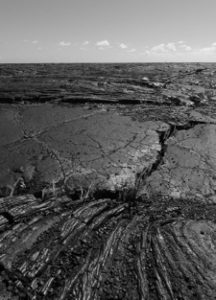Cinders as Far as the Eye Can See
Archived series ("Inactive feed" status)
When?
This feed was archived on February 13, 2019 05:18 (
Why? Inactive feed status. Our servers were unable to retrieve a valid podcast feed for a sustained period.
What now? You might be able to find a more up-to-date version using the search function. This series will no longer be checked for updates. If you believe this to be in error, please check if the publisher's feed link below is valid and contact support to request the feed be restored or if you have any other concerns about this.
Manage episode 217973053 series 1318266
 While I explored central Idaho’s Snake River Plain, I camped at Craters of the Moon National Monument. I had a weather satellite photo, on which the Snake River Plain forms a curving band of tan and green, fading to gray where the volcanic track of the Yellowstone Hotspot comes in. Against those muted colors, the black lava fields in Craters of the Moon stick down from the north like a sore thumb.
While I explored central Idaho’s Snake River Plain, I camped at Craters of the Moon National Monument. I had a weather satellite photo, on which the Snake River Plain forms a curving band of tan and green, fading to gray where the volcanic track of the Yellowstone Hotspot comes in. Against those muted colors, the black lava fields in Craters of the Moon stick down from the north like a sore thumb.
The eruptions that formed these fields began through a 75-mile crack in the earth’s crust, back in the days of the Columbian mammoth. Lava spewed for thousands of years, finally ceasing while the first Caesars ruled Rome. The cinders have long cooled. Now they stretch as far as the eye can see,
a thousand square miles of blasted desert.
I stood one morning on the highway pullout above Craters of the Moon, gazing at the black horizon of this volcanic sideshow. My eye strayed back from the horizon and lit on a nearby tuft of vegetation growing from a crack between volcanic boulders. At first it seemed incongruous that a wildflower could struggle up from such barrenness. A couple thousand years of dust must have settled into the bottom of that crack to support it. And a seed blew in. A sprinkle of rain now and then, and seeds have no choice but to try to grow wherever they land.
Lava fields are incredibly rugged terrain. Traveling off designated walkways is prohibited, but even if a person tried, basalt edges sharp as broken glass would quickly cut even the stoutest shoes to ribbons. Yet everywhere I wandered, grasses and wildflowers sprouted from fissures and low places. It might take thousands more years, but they are going to show the harsh stone who’s boss. There, it seems to me, is a lesson in persistence.
It struck me like a flash: T. S. Eliot was wrong, April is not the cruelest month, breeding flowers from the
dead land. Flowers breeding from the dead land is an act of heroism which merits deep human reverence. Ever and always, amid Extinction Events or these lava fields or whatever the backside of human technology may do to us, life will ever venture forth upon the blasted land.
If we want the meaning of life, as far as I’m concerned, there it is. Human greatness, I say, is a delusion. Achievement is just a spark against the relentless winds and limitless tides of time and change. But a seed drills into new soil, a hand is offered to a new stranger. As long as our species endures, that will be the meaning and achievement that matters.
Excerpted from Dennis McCarty’s book Reflections: On Time, Culture, and Spirits in America.
299 episodes




